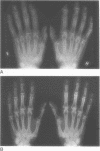Abstract
OBJECTIVES: To study the impact of articular hypermobility on the clinical and radiological features of hand osteoarthritis (OA) and to investigate whether hand osteoarthritis associated with hypermobility should be considered a separate subset of hand OA. METHODS: Fifty consecutive female patients with clinical hand OA and thumb base symptoms were examined for hypermobility according to the Beighton criteria. RESULTS: Thirty one of the 50 patients had hypermobility features (Beighton score > or = 2) and 17 patients fulfilled four or more Beighton criteria. Corresponding figures for 94 control patients were 30 (p < 0.05) and nine (p < 0.001) respectively. Patients with hypermobility features were characterised clinically and radiologically by fewer and less severely involved interphalangeal joints. Radiologically, two fairly distinct subsets could be identified: Severe interphalangeal OA in which the prevalence of hypermobility was similar to controls, and patients with predominant involvement of the first carpometacarpal joint (CMC 1), most of whom had evidence of hypermobility. CONCLUSION: A causal relation exists between articular hypermobility and development of thumb base OA, and hypermobility associated hand OA constitutes a definite clinical and radiological subset of hand OA. In the clinical setting, the easily applied hypermobility criterion of passive dorsiflexion of the fifth finger > or = 90 degrees is useful in identifying most patients with hand OA and hypermobility.
Full text
PDF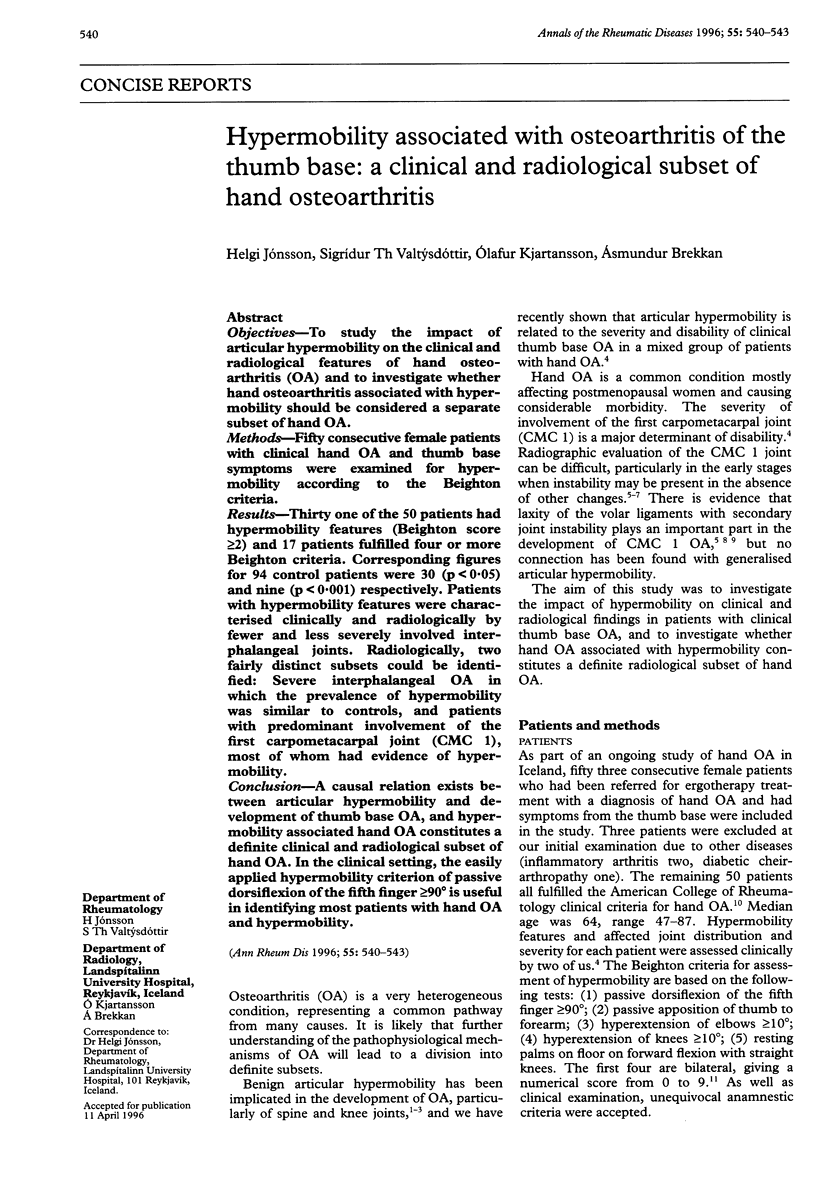
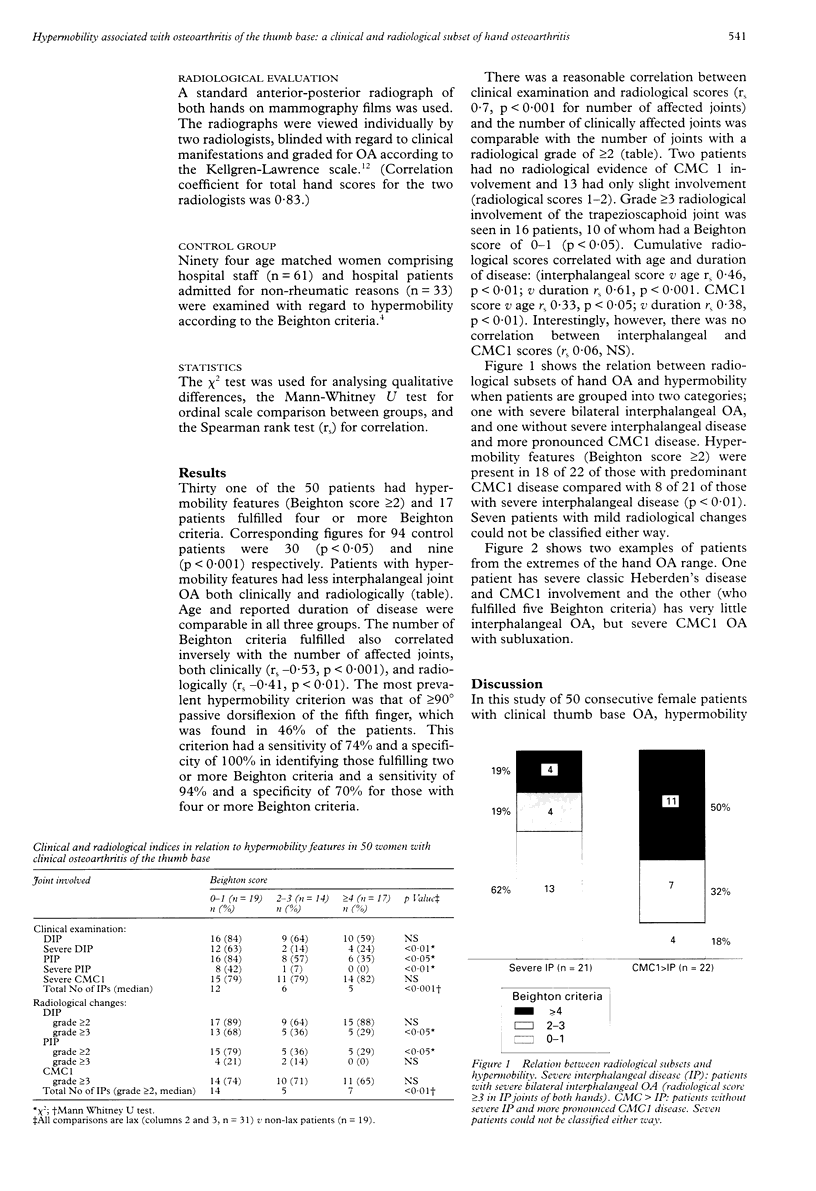
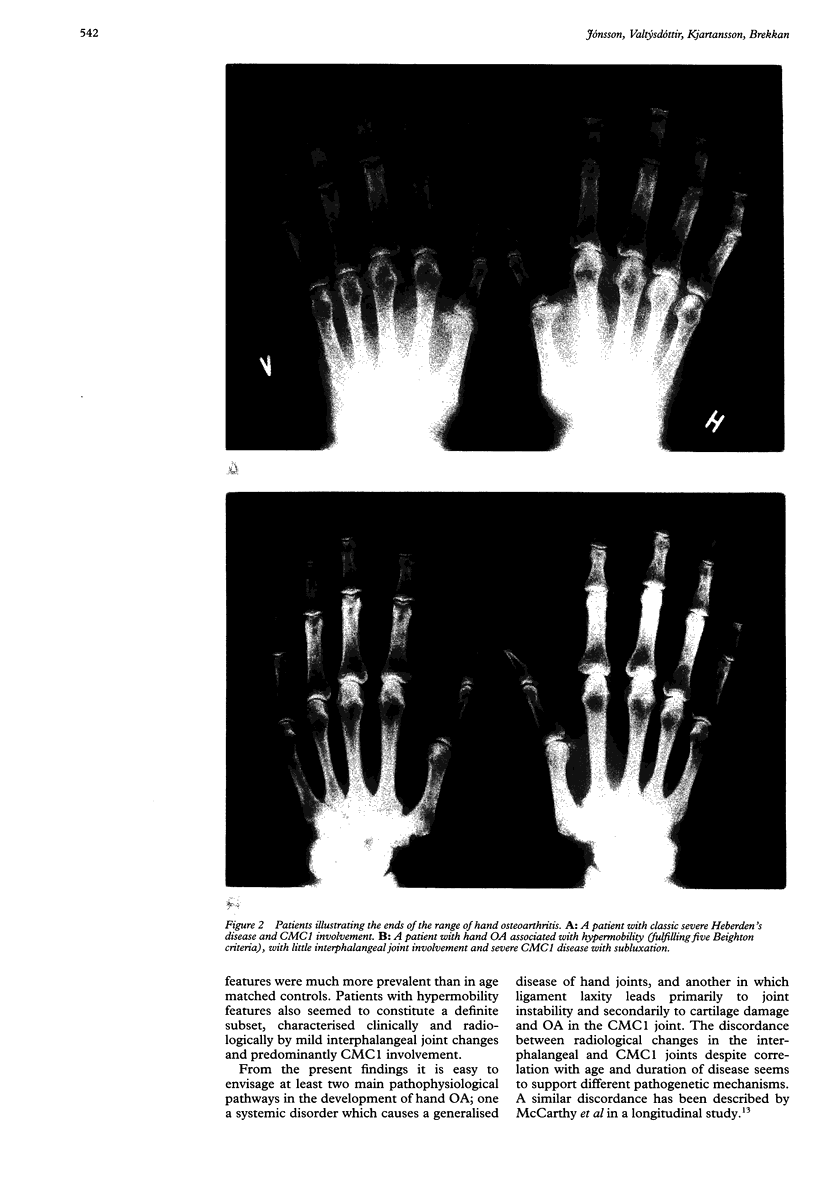
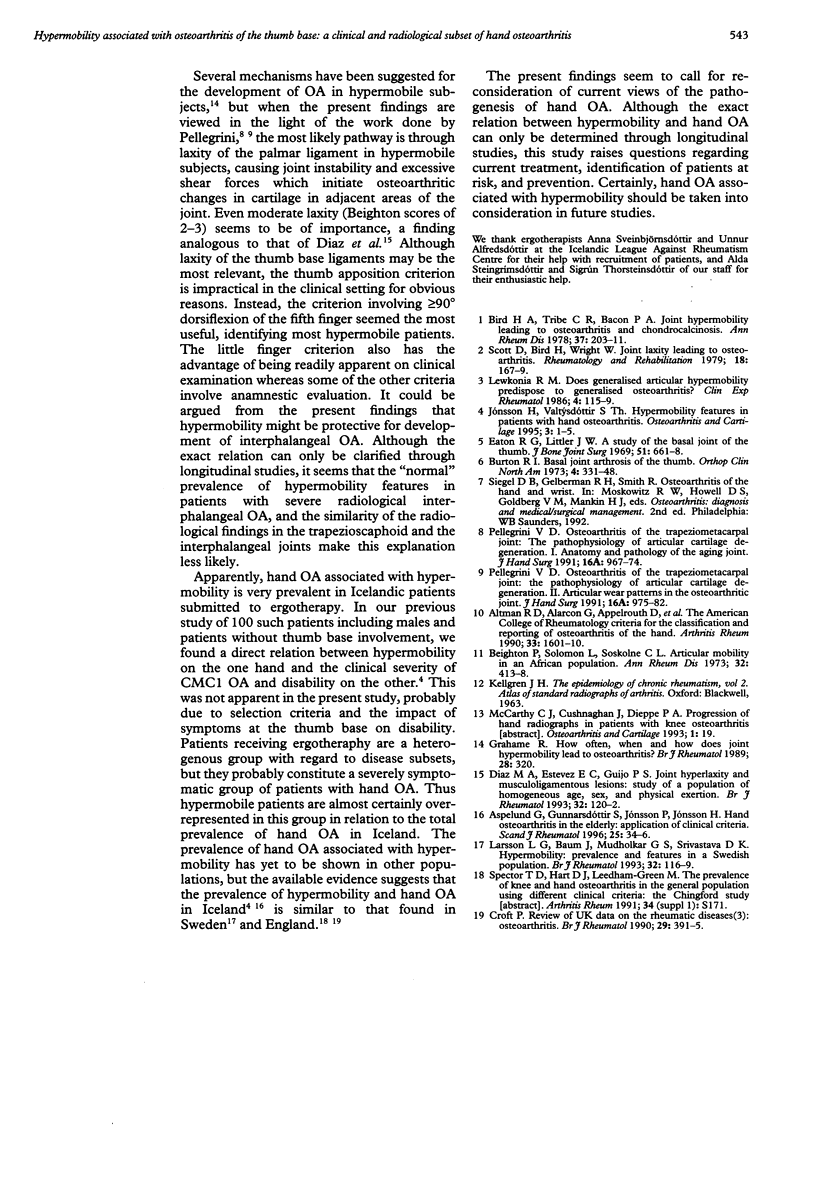
Images in this article
Selected References
These references are in PubMed. This may not be the complete list of references from this article.
- Acasuso Díaz M., Collantes Estévez E., Sánchez Guijo P. Joint hyperlaxity and musculoligamentous lesions: study of a population of homogeneous age, sex and physical exertion. Br J Rheumatol. 1993 Feb;32(2):120–122. doi: 10.1093/rheumatology/32.2.120. [DOI] [PubMed] [Google Scholar]
- Altman R., Alarcón G., Appelrouth D., Bloch D., Borenstein D., Brandt K., Brown C., Cooke T. D., Daniel W., Gray R. The American College of Rheumatology criteria for the classification and reporting of osteoarthritis of the hand. Arthritis Rheum. 1990 Nov;33(11):1601–1610. doi: 10.1002/art.1780331101. [DOI] [PubMed] [Google Scholar]
- Beighton P., Solomon L., Soskolne C. L. Articular mobility in an African population. Ann Rheum Dis. 1973 Sep;32(5):413–418. doi: 10.1136/ard.32.5.413. [DOI] [PMC free article] [PubMed] [Google Scholar]
- Bird H. A., Tribe C. R., Bacon P. A. Joint hypermobility leading to osteoarthrosis and chondrocalcinosis. Ann Rheum Dis. 1978 Jun;37(3):203–211. doi: 10.1136/ard.37.3.203. [DOI] [PMC free article] [PubMed] [Google Scholar]
- Croft P. Review of UK data on the rheumatic diseases--3. Osteoarthritis. Br J Rheumatol. 1990 Oct;29(5):391–395. doi: 10.1093/rheumatology/29.5.391. [DOI] [PubMed] [Google Scholar]
- Eaton R. G., Littler J. W. A study of the basal joint of the thumb. Treatment of its disabilities by fusion. J Bone Joint Surg Am. 1969 Jun;51(4):661–668. [PubMed] [Google Scholar]
- Grahame R. How often, when and how does joint hypermobility lead to osteoarthritis? Br J Rheumatol. 1989 Aug;28(4):320–320. doi: 10.1093/rheumatology/28.4.320. [DOI] [PubMed] [Google Scholar]
- Larsson L. G., Baum J., Mudholkar G. S., Srivastava D. K. Hypermobility: prevalence and features in a Swedish population. Br J Rheumatol. 1993 Feb;32(2):116–119. doi: 10.1093/rheumatology/32.2.116. [DOI] [PubMed] [Google Scholar]
- Lewkonia R. M. Does generalised articular hypermobility predispose to generalised osteoarthritis? Clin Exp Rheumatol. 1986 Apr-Jun;4(2):115–119. [PubMed] [Google Scholar]
- Pellegrini V. D., Jr Osteoarthritis of the trapeziometacarpal joint: the pathophysiology of articular cartilage degeneration. I. Anatomy and pathology of the aging joint. J Hand Surg Am. 1991 Nov;16(6):967–974. doi: 10.1016/s0363-5023(10)80054-1. [DOI] [PubMed] [Google Scholar]
- Scott D., Bird H., Wright V. Joint laxity leading to osteoarthrosis. Rheumatol Rehabil. 1979 Aug;18(3):167–169. doi: 10.1093/rheumatology/18.3.167. [DOI] [PubMed] [Google Scholar]



